Indexed in: ESCI, Scopus, PubMed,
PubMed Central, CAS, DOAJ, KCI
PubMed Central, CAS, DOAJ, KCI
FREE article processing charge

Current issue
- Page Path
- HOME > Browse Articles > Current issue
Imagery
- Spring of Cheongsando island
- J Yeungnam Med Sci. 2024;41(2):i. Published online January 24, 2024
- DOI: https://doi.org/10.12701/jyms.2024.00059

- 413 View
- 11 Download
Review articles
- Comprehensive overview of the role of mitochondrial dysfunction in the pathogenesis of acute kidney ischemia-reperfusion injury: a narrative review
- Min-Ji Kim, Chang Joo Oh, Chang-Won Hong, Jae-Han Jeon
- J Yeungnam Med Sci. 2024;41(2):61-73. Published online February 14, 2024
- DOI: https://doi.org/10.12701/jyms.2023.01347
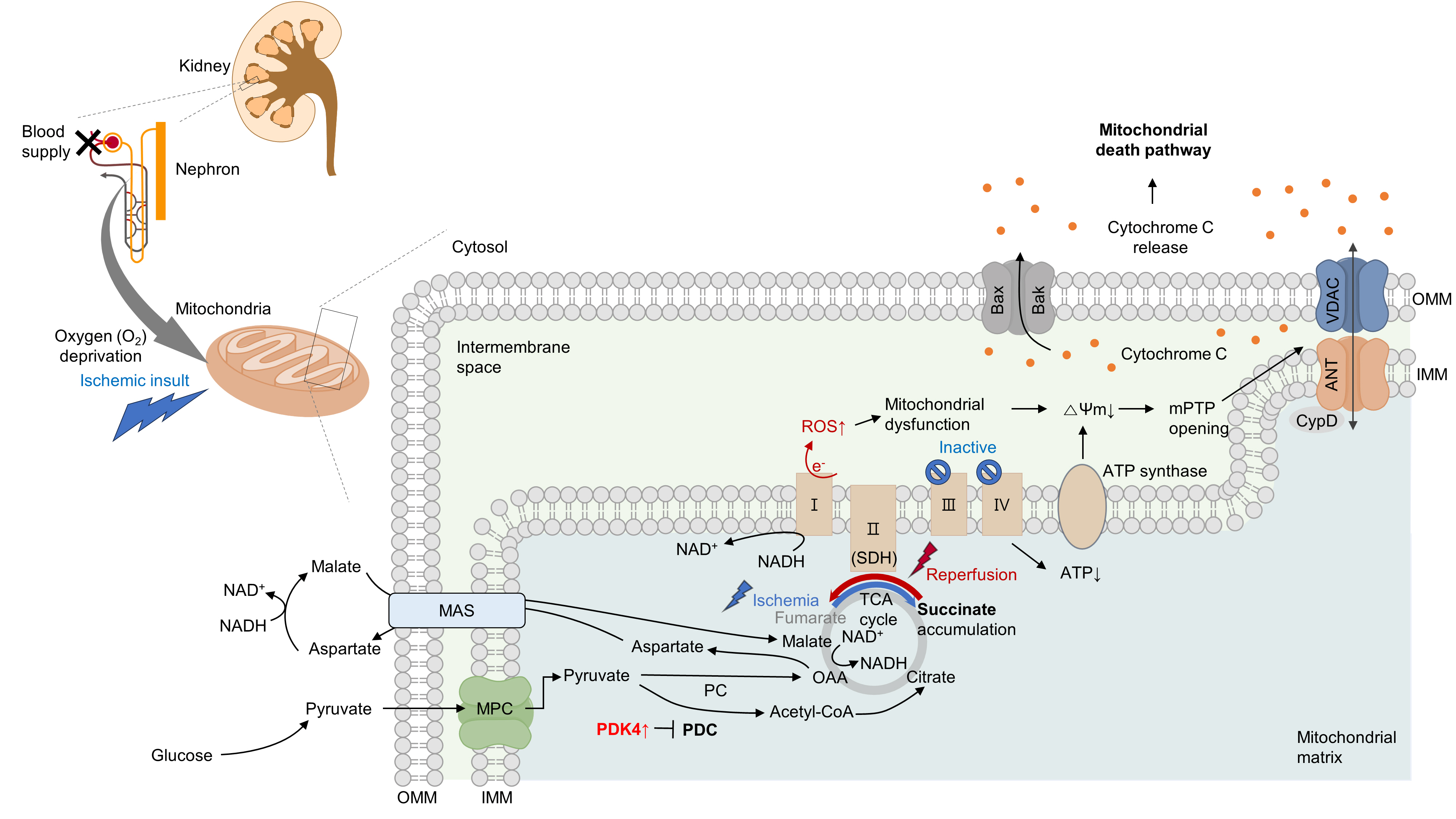
- 875 View
- 54 Download
-
 Abstract
Abstract
 PDF
PDF - Acute kidney ischemia-reperfusion (IR) injury is a life-threatening condition that predisposes individuals to chronic kidney disease. Since the kidney is one of the most energy-demanding organs in the human body and mitochondria are the powerhouse of cells, mitochondrial dysfunction plays a central role in the pathogenesis of IR-induced acute kidney injury. Mitochondrial dysfunction causes a reduction in adenosine triphosphate production, loss of mitochondrial dynamics (represented by persistent fragmentation), and impaired mitophagy. Furthermore, the pathological accumulation of succinate resulting from fumarate reduction under oxygen deprivation (ischemia) in the reverse flux of the Krebs cycle can eventually lead to a burst of reactive oxygen species driven by reverse electron transfer during the reperfusion phase. Accumulating evidence indicates that improving mitochondrial function, biogenesis, and dynamics, and normalizing metabolic reprogramming within the mitochondria have the potential to preserve kidney function during IR injury and prevent progression to chronic kidney disease. In this review, we summarize recent advances in understanding the detrimental role of metabolic reprogramming and mitochondrial dysfunction in IR injury and explore potential therapeutic strategies for treating kidney IR injury.
- Patient-physician interaction education in Korea: a systematic review
- Hwan Ho Lee, Yu Ra Kim, Hye Jin Park
- J Yeungnam Med Sci. 2024;41(2):74-79. Published online February 5, 2024
- DOI: https://doi.org/10.12701/jyms.2023.01109
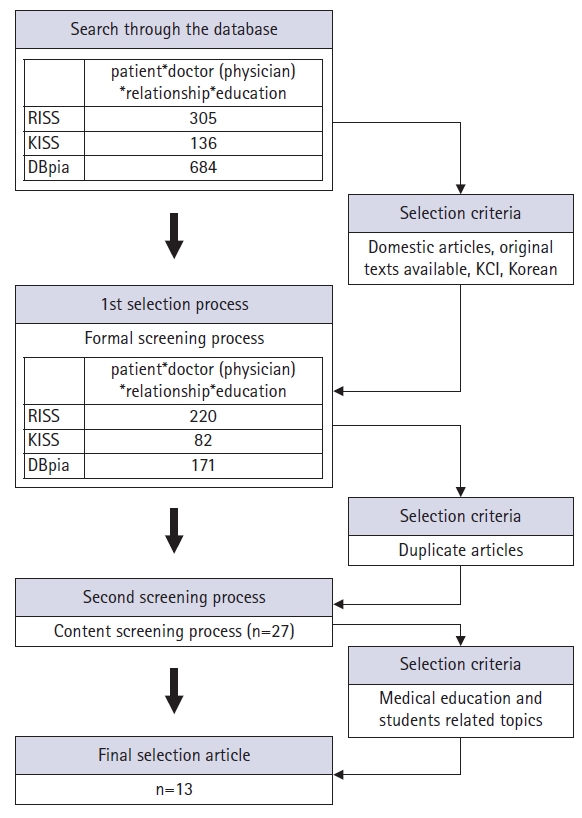
- 561 View
- 31 Download
-
 Abstract
Abstract
 PDF
PDF - Patient-physician interaction (PPI) is an important area in medical education, but in-depth discussions on the content of the outcome of patient-doctor education are rare. Therefore, in this study, we will systematically analyze the research on PPI education in Korea. In this study, papers searched with keywords related to PPI education from Korea’s academic journal service were targeted according to a systematic literature analysis method. The scope of the study was to include papers published in academic journals that are candidates for Korea Citation Index registration, excluding dissertations, research reports, posters, conference presentations, books, and internet materials. The content included papers targeting medical education and medical school students was set as the range. As a result of the analysis, although communication between PPI has many positive effects in the PPI in medical education at medical schools, obstacles do occur, and various ways to overcome them were suggested. Therefore, although medical interview training between patients and doctors in medical schools is necessary, it was analyzed as being based on overseas research or lacking in specific content. The core of PPI education appears to be medical interviews, and it seems necessary to discuss whether empathy or patient-centered medical care are appropriate as the main principles of PPI education in Korea. Therefore, education on the patient-doctor relationship is an important element in medical humanities and medical humanities education, and it is expected that research and education on this will progress more actively.
Original articles
- Marginal fit of three different nanocomposite inlays fabricated with computer-aided design/computer-aided manufacturing (CAD/CAM) technology: a comparative study
- Hyunsuk Choi, Jae-Young Jo, Min-Ho Hong
- J Yeungnam Med Sci. 2024;41(2):80-85. Published online January 22, 2024
- DOI: https://doi.org/10.12701/jyms.2023.00934
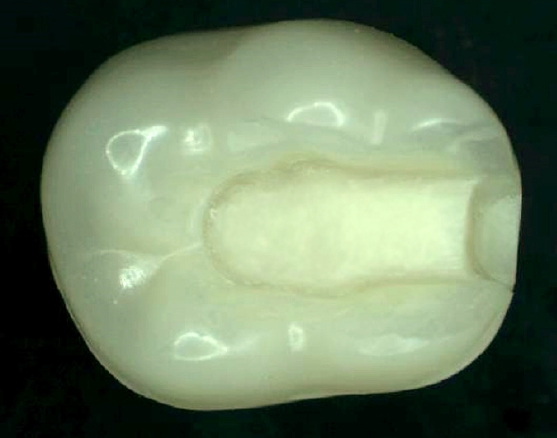
- 583 View
- 26 Download
-
 Abstract
Abstract
 PDF
PDF - Background
This study aimed to compare and evaluate the marginal fit of nanocomposite computer-aided design/computer-aided manufacturing (CAD/CAM) inlays. Three types of nanocomposite CAD/CAM blocks (HASEM, VITA Enamic, and Lava Ultimate) were used as materials.
Methods
Class II disto-occlusal inlay restorations were prepared on a typodont mandibular right first molar using diamond rotary instruments. The inlays were fabricated using CAD/CAM technology and evaluated using the silicone replica technique to measure marginal gaps at five locations on each inlay. The data were analyzed by two-way analysis of variance and Tukey post hoc tests ( α=0.05).
Results
There were no significant differences in the marginal gaps based on the type of nanocomposite CAD/CAM inlay used (p=0.209). However, there was a significant difference in the marginal gaps between the measurement regions. The gingival region consistently exhibited a larger marginal gap than the axial and occlusal regions (p<0.001).
Conclusion
Within the limitations of this in vitro study, the measurement location significantly influenced the marginal fit of class II disto-occlusal inlay restorations. However, there were no significant differences in the marginal gaps among the different types of CAD/CAM blocks. Furthermore, the overall mean marginal fits of the class II disto-occlusal inlay restorations made with the three types of nanocomposite CAD/CAM blocks were within the clinically acceptable range.
- Impact of COVID-19 on the development of major mental disorders in patients visiting a university hospital: a retrospective observational study
- Hee-Cheol Kim
- J Yeungnam Med Sci. 2024;41(2):86-95. Published online February 6, 2024
- DOI: https://doi.org/10.12701/jyms.2023.01256

- 714 View
- 28 Download
-
 Abstract
Abstract
 PDF
PDF - Background
This study aimed to investigate the impact of coronavirus disease 2019 (COVID-19) on the development of major mental disorders in patients visiting a university hospital.
Methods
The study participants were patients with COVID-19 (n=5,006) and those without COVID-19 (n=367,162) registered in the database of Keimyung University Dongsan Hospital and standardized with the Observational Medical Outcomes Partnership Common Data Model. Data on major mental disorders that developed in both groups over the 5-year follow-up period were extracted using the FeederNet computer program. A multivariate Cox proportional hazards model was used to estimate the hazard ratio (HR) and 95% confidence interval (CI) for the incidence of major mental disorders.
Results
The incidences of dementia and sleep, anxiety, and depressive disorders were significantly higher in the COVID-19 group than in the control group. The incidence rates per 1,000 patient-years in the COVID-19 group vs. the control group were 12.71 vs. 3.76 for dementia, 17.42 vs. 7.91 for sleep disorders, 6.15 vs. 3.41 for anxiety disorders, and 8.30 vs. 5.78 for depressive disorders. There was no significant difference in the incidence of schizophrenia or bipolar disorder between the two groups. COVID-19 infection increased the risk of mental disorders in the following order: dementia (HR, 3.49; 95% CI, 2.45–4.98), sleep disorders (HR, 2.27; 95% CI, 1.76–2.91), anxiety disorders (HR, 1.90; 95% CI, 1.25–2.84), and depressive disorders (HR, 1.54; 95% CI, 1.09–2.15).
Conclusion
This study showed that the major mental disorders associated with COVID-19 were dementia and sleep, anxiety, and depressive disorders.
- Right anterior mini-thoracotomy aortic valve replacement versus transcatheter aortic valve implantation in octogenarians: a single-center retrospective study
- Ji Eun Im, Eun Yeung Jung, Seok Soo Lee, Ho-Ki Min
- J Yeungnam Med Sci. 2024;41(2):96-102. Published online February 26, 2024
- DOI: https://doi.org/10.12701/jyms.2023.01228

- 729 View
- 20 Download
-
 Abstract
Abstract
 PDF
PDF - Background
The aim of this study was to compare the early outcomes of octogenarians undergoing minimally invasive right anterior mini-thoracotomy aortic valve replacement (RAT-AVR) with those undergoing transcatheter aortic valve implantation (TAVI) for aortic valve disease.
Methods
In this single-center retrospective study, data were collected from octogenarians before and after RAT-AVR and TAVI between January 2021 and July 2022. Short-term outcomes, including the length of hospital stay, in-hospital mortality, all-cause mortality, and other major postoperative complications, were compared and analyzed.
Results
There were no significant differences in in-hospital mortality, stroke, acute kidney dysfunction requiring renal replacement therapy, length of intensive care unit stay, or length of hospital stay. However, the TAVI group had a higher incidence of permanent pacemaker insertion (10% vs. 0%, p=0.54) and paravalvular leaks (75% vs. 0%, p<0.001).
Conclusion
In the present study on octogenarians, both TAVI and RAT-AVR showed comparable short-term results. Although both procedures were considered safe and effective in the selected group, RAT-AVR had a lower incidence of complete atrioventricular block and paravalvular regurgitation.
- DA-6034 ameliorates hepatic steatosis and inflammation in high fat diet-induced obese mice
- Hong Min Kim, Mi-Hye Kwon, Eun Soo Lee, Kyung Bong Ha, Choon Hee Chung
- J Yeungnam Med Sci. 2024;41(2):103-112. Published online March 15, 2024
- DOI: https://doi.org/10.12701/jyms.2023.01389

- 868 View
- 19 Download
-
 Abstract
Abstract
 PDF
PDF - Background
Nonalcoholic fatty liver disease (NAFLD) is characterized by an increase in hepatic triglyceride content and increased inflammatory macrophage infiltration through the C-C motif chemokine receptor (CCR) 5 pathway in the liver. DA-6034 (7-carboxymethyloxy-3',4',5-trimethoxy flavone), is a synthetic derivative of eupatilin that exhibits anti-inflammatory activity in inflammatory bowel disease. However, the effect of DA-6034 on the inflammatory response in NAFLD is not well elucidated. Therefore, we aimed to determine the effect of DA-6034 on hepatic steatosis and inflammation.
Methods
Forty male C57BL/6J mice were divided into the following four groups: (1) regular diet (RD), (2) RD with DA-6034, (3) high fat diet (HFD), and (4) HFD with DA-6034. All mice were sacrificed 12 weeks after the start of the experiment. The effects of DA-6034 on macrophages were assessed using RAW264.7 cells.
Results
DA-6034 not only reduced hepatic triglyceride levels and lipid accumulation but also macrophage infiltration and proinflammatory cytokines in HFD-fed mice. According to fluorescence-activated cell sorter analysis, DA-6034 reduced the CD8+ T cell fraction in the liver of HFD-fed mice. DA-6034 also reduced CCR5 expression and the migration of liver macrophages in HFD-fed mice and inhibited CCR2 ligand and CCR4 ligand, which stimulated the migration of macrophages.
Conclusion
Overall, DA-6034 attenuates hepatic steatosis and inflammation in obesity by regulating CCR5 expression in macrophages.
- Performance of the BD MAX MDR-TB assay in a clinical setting and its impact on the clinical course of patients with pulmonary tuberculosis: a retrospective before-after study
- Sung Jun Ko, Kui Hyun Yoon, Sang Hee Lee
- J Yeungnam Med Sci. 2024;41(2):113-119. Published online April 5, 2024
- DOI: https://doi.org/10.12701/jyms.2024.00024
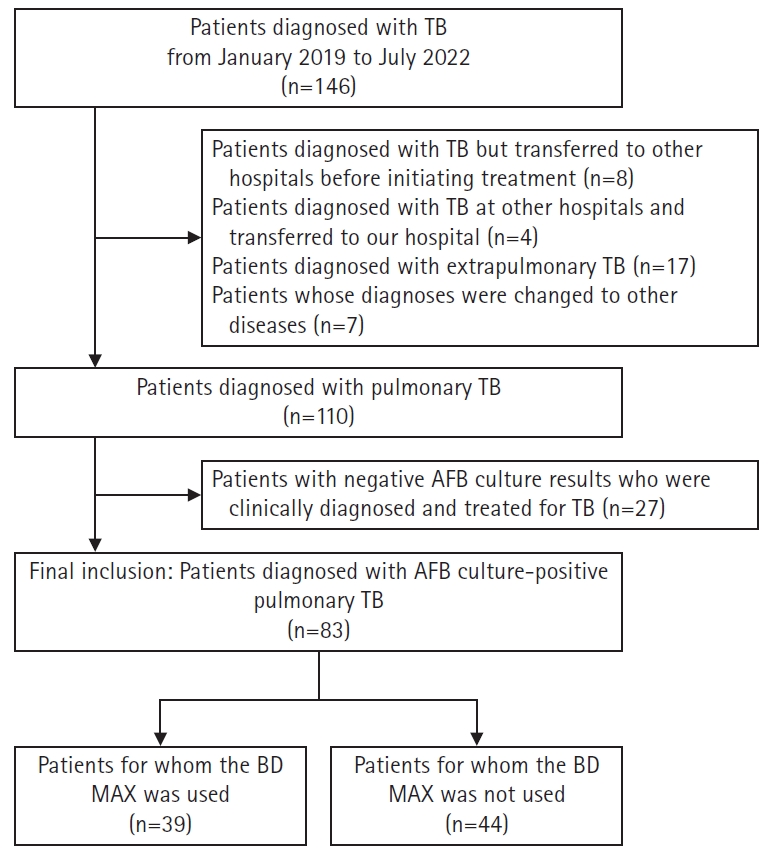
- 317 View
- 23 Download
-
 Abstract
Abstract
 PDF
PDF - Background
Missing isoniazid (INH) resistance during tuberculosis (TB) diagnosis can worsen the outcomes of INH-resistant TB. The BD MAX MDR-TB assay (BD MAX) facilitates the rapid detection of TB and INH and rifampin (RIF) resistance; however, data related to its performance in clinical setting remain limited. Moreover, its effect on treatment outcomes has not yet been studied.
Methods
We compared the performance of BD MAX for the detection of INH/RIF resistances to that of the line probe assay (LPA) in patients with pulmonary TB (PTB), using the results of a phenotypic drug sensitivity test as a reference standard. The treatment outcomes of patients who used BD MAX were compared with those of patients who did not.
Results
Of the 83 patients included in the study, the BD MAX was used for an initial PTB diagnosis in 39 patients. The sensitivity of BD MAX for detecting PTB was 79.5%. The sensitivity and specificity of BD MAX for INH resistance were both 100%, whereas these were 50.0% and 95.8%, respectively, for RIF resistance. The sensitivity and specificity of BD MAX were comparable to those of LPA. The BD MAX group had a shorter time interval from specimen request to the initiation of anti-TB drugs (2.0 days vs. 5.5 days, p=0.001).
Conclusion
BD MAX showed comparable performance to conventional tests for detecting PTB and INH/RIF resistances. The implementation of BD MAX as a diagnostic tool for PTB resulted in a shorter turnaround time for the initiation of PTB treatment.
- Optimal examination for traumatic nerve/muscle injuries in earthquake survivors: a retrospective observational study
- Berkay Yalçınkaya, Büşranur Tüten Sağ, Mahmud Fazıl Aksakal, Pelin Analay, Hasan Ocak, Murat Kara, Bayram Kaymak, Levent Özçakar
- J Yeungnam Med Sci. 2024;41(2):120-127. Published online April 5, 2024
- DOI: https://doi.org/10.12701/jyms.2024.00087

- 393 View
- 20 Download
-
 Abstract
Abstract
 PDF
PDF Supplementary Material
Supplementary Material - Background
Physiatrists are facing with survivors from disasters in both the acute and chronic phases of muscle and nerve injuries. Similar to many other clinical conditions, neuromusculoskeletal ultrasound can play a key role in the management of such cases (with various muscle/nerve injuries) as well. Accordingly, in this article, a recent single-center experience after the Turkey-Syria earthquake will be rendered.
Methods
Ultrasound examinations were performed for various nerve/muscle lesions in 52 earthquake victims referred from different cities. Demographic features, type of injuries, and applied treatment procedures as well as detailed ultrasonographic findings are illustrated.
Results
Of the 52 patients, 19 had incomplete peripheral nerve lesions of the brachial plexus (n=4), lumbosacral plexus (n=1), and upper and lower limbs (n=14).
Conclusion
The ultrasonographic approach during disaster relief is paramount as regards subacute and chronic phases of rehabilitation. Considering technological advances (e.g., portable machines), the use of on-site ultrasound examination in the (very) early phases of disaster response also needs to be on the agenda of medical personnel.
Case report
- Atypical presentation of DeBakey type I aortic dissection mimicking pulmonary embolism in a pregnant patient: a case report
- Sou Hyun Lee, Ji Hee Hong, Chaeeun Kim
- J Yeungnam Med Sci. 2024;41(2):128-133. Published online February 5, 2024
- DOI: https://doi.org/10.12701/jyms.2023.01319
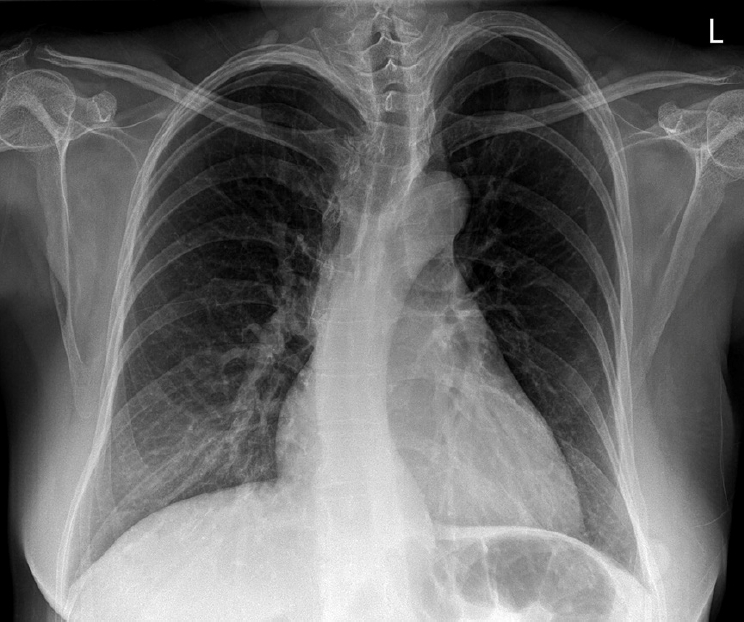
- 594 View
- 20 Download
-
 Abstract
Abstract
 PDF
PDF - Aortic dissection in pregnant patients results in an inpatient mortality rate of 8.6%. Owing to the pronounced mortality rate and speed at which aortic dissections progress, efficient early detection methods are crucial. Here, we highlight the importance of early chest computed tomography (CT) for differentiating aortic dissection from pulmonary embolism in pregnant patients with dyspnea. We present the unique case of a 38-year-old pregnant woman with elevated D-dimer and N-terminal pro-brain natriuretic peptide (NT-proBNP) levels, initially suspected of having a pulmonary embolism. Initial transthoracic echocardiography did not indicate aortic dissection. Surprisingly, after an emergency cesarean section, a chest CT scan revealed a DeBakey type I aortic dissection, indicating a diagnostic error. Our findings emphasize the need for early chest CT in pregnant patients with dyspnea and elevated D-dimer and NT-proBNP levels. This case report highlights the critical importance of considering both aortic dissection and pulmonary embolism in the differential diagnosis of such cases, which will inform future clinical practice.
Communications
- Rehabilitative goals for patients undergoing lung retransplantation
- Massimiliano Polastri, Robert M. Reed
- J Yeungnam Med Sci. 2024;41(2):134-138. Published online April 5, 2024
- DOI: https://doi.org/10.12701/jyms.2024.00241

- 315 View
- 44 Download
-
 Abstract
Abstract
 PDF
PDF - Lung retransplantation (LRT) involves a second or subsequent lung transplant (LT) in a patient whose first transplanted graft has failed. LRT is the only treatment option for irreversible lung allograft failure caused by acute graft failure, chronic lung allograft dysfunction, or postoperative complications of bronchial anastomosis. Prehabilitation (rehabilitation before LT), while patients are on the waiting list, is recognized as an essential component of the therapeutic regimen and should be offered throughout the waiting period from the moment of listing until transplantation. LRT is particularly fraught with challenges, and prehabilitation to reduce frailty is one of the few opportunities to address modifiable risk factors (such as functional and motor impairments) in a patient population in which there is clearly room to improve outcomes. Although rehabilitative outcomes and quality of life in patients receiving or awaiting LT have gained increased interest, there is a paucity of data on rehabilitation in patients undergoing LRT. Frailty is one of the few modifiable risk factors of retransplantation that is potentially preventable. As such, it is imperative that professionals involved in the field of retransplantation conduct research specifically exploring rehabilitative techniques and outcomes of value for patients receiving LRT, because this area remains unexplored.

 E-Submission
E-Submission Yeungnam University College of Medicine
Yeungnam University College of Medicine

 First
First Prev
Prev



